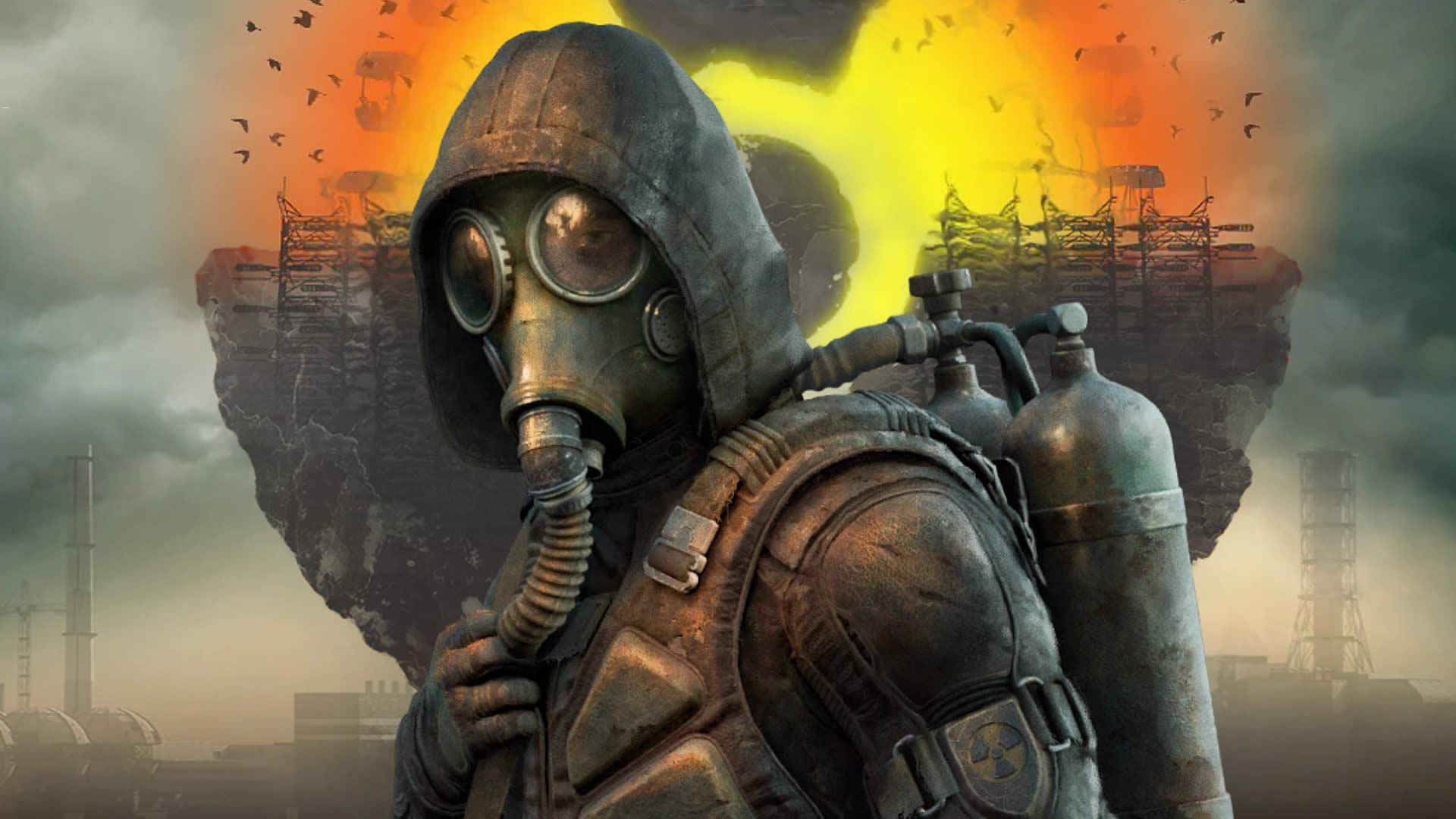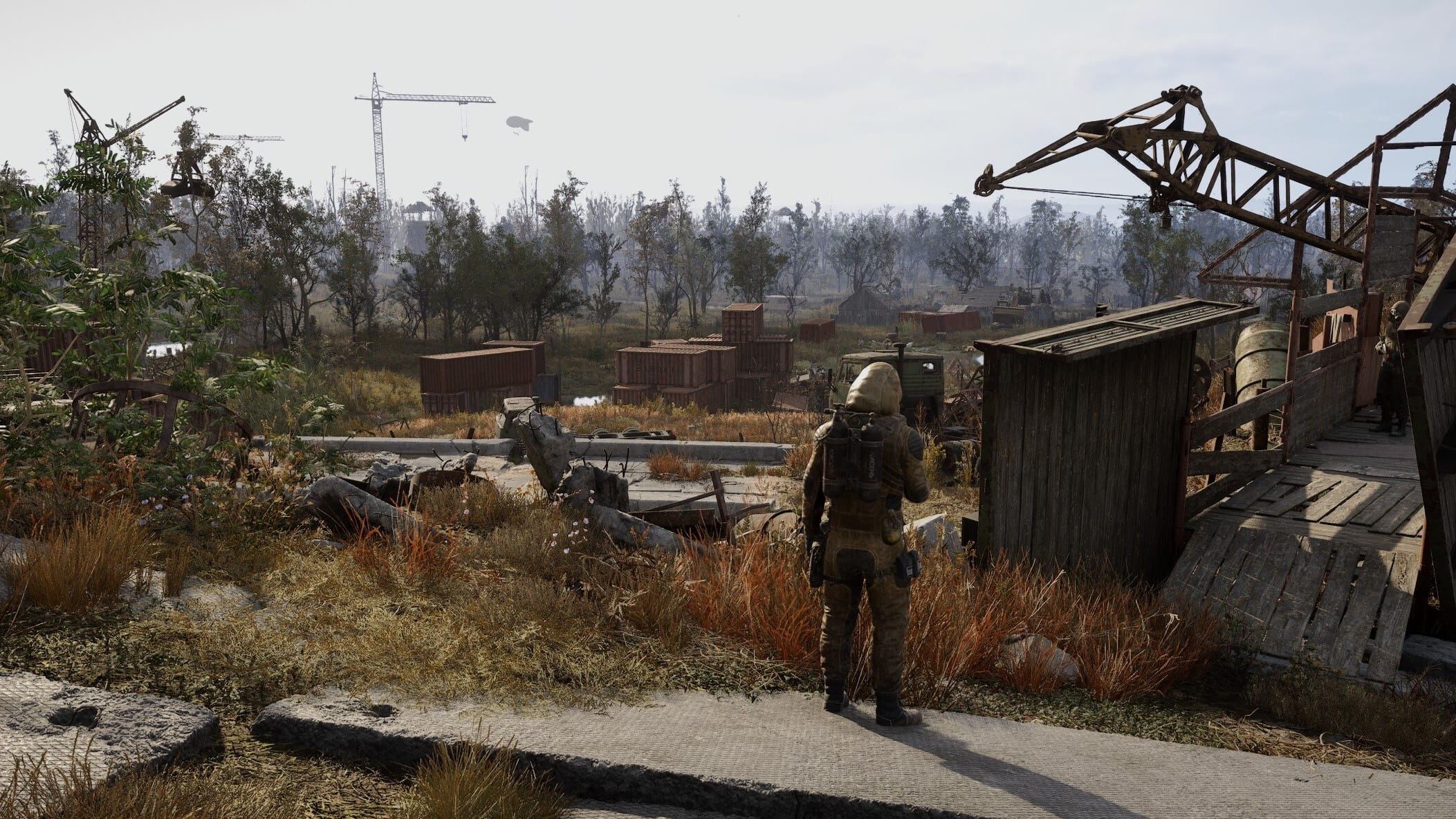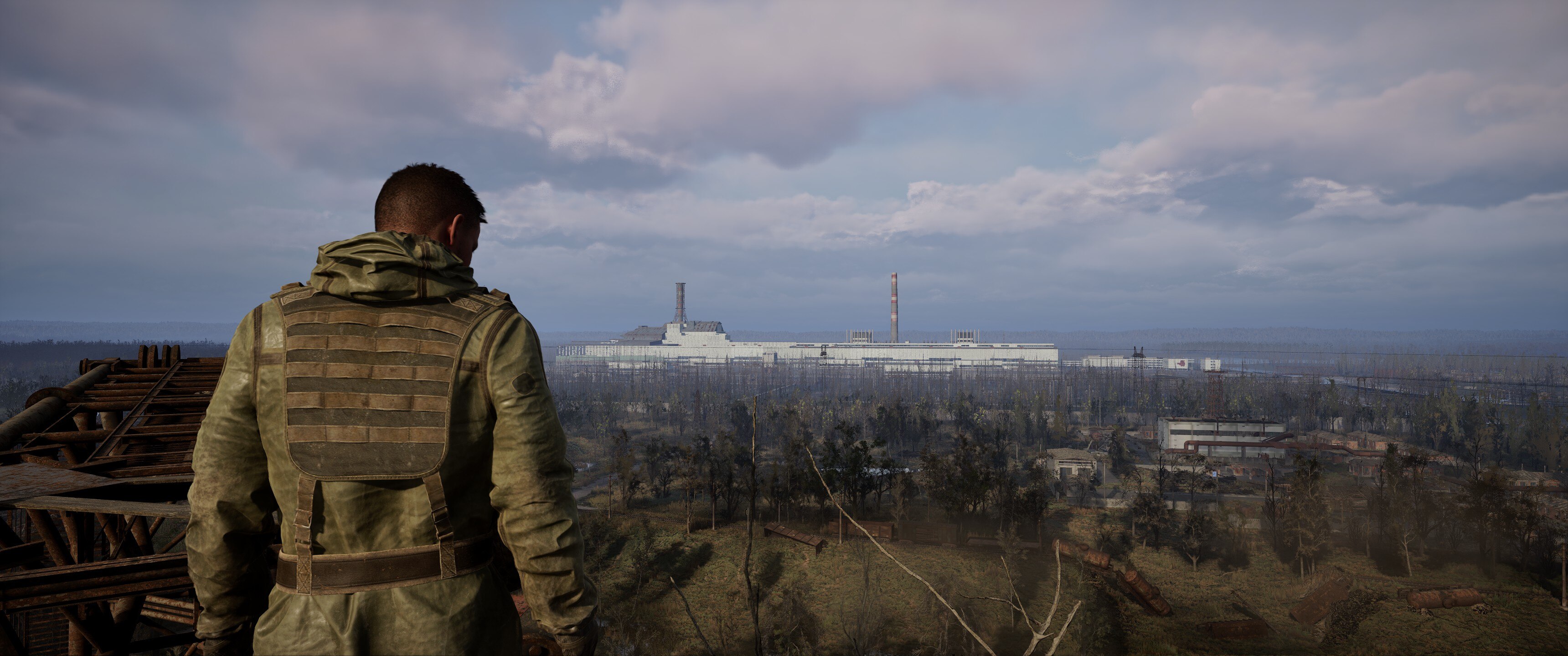Windows Central Verdict
STALKER 2: Heart of Chornobyl stands tall as one of the most captivating open-world shooters I've ever played, with palpable atmosphere and deeply rewarding exploration that kept me glued to my seat along with addictively intense and dynamic action that kept me on the edge of it. Some major issues with certain mutant encounters and noteworthy bugs and performance snags take away from the experience, but even so, The Zone will engross you with its haunting wonders. There's truly nothing else like it.
Pros
- +
Hauntingly beautiful atmosphere that pulls you in like nothing else
- +
Intense and dynamic moment-to-moment gameplay, reactive open world full of secrets to find
- +
Enjoyable story with interesting choices, branching paths
- +
Amazing audio/visual presentation, solid overall performance
Cons
- -
Enemies are a little spongey, and several scripted encounters with mutants feel cheap
- -
Some strange bugs with enemy spawns can cause frustration
- -
Notable performance issues that are relatively uncommon, but nevertheless grating
Why you can trust Windows Central
14 years after its original announcement in 2010, six after the news of its revival in 2018, and two after its original 2022 release date, STALKER 2: Heart of Chornobyl is finally arriving on Xbox Series X|S, Windows PC, and Xbox Game Pass. This review has gone live just a few hours before the game's official launch, at which time droves of players will pour into the open-world single player shooter and begin their journey through its take on the Chornobyl Exclusion Zone (referred to simply as "The Zone" in-game).
Playing over 40 hours of this title in the past week and writing this review feels surreal, given that STALKER 2 itself has been cancelled, brought back to life, and then subsequently delayed multiple times as a result of Russia's ongoing invasion of Ukraine. Developer GSC Game World has toiled away at the project resiliently under conditions a comfy work from home writer like myself can hardly fathom, with many of its employees volunteering for frontline service, working to aid their local communities, or evacuating to the studio's new Prague headquarters with their families.
To see this project reach the finish line is a testament to GSC's tenacity — and unsurprisingly, excitement for the hardcore FPS ramped up sharply this year once it was clear that it was coming out at long last. As I write this, STALKER 2 remains the fourth most-wishlisted game on Steam, and is the platform's top-selling title as well. But does it actually live up to the hype? Is this the fulfilling sequel that fans of the series' original cult classic trilogy have waited 15 years for?
Speaking as someone who's put countless hours into the first three games, I'm happy to say that STALKER 2 is the modern follow-up I've longed for for years — though it's far from perfect, with combat balancing issues as well as irksome bugs and some performance problems that detract from the experience. Even so, it's one of the most captivating open-world shooters I've ever played, with gripping atmosphere, nerve-wracking tension, and a gameplay loop so addictive that it's consistently kept me engrossed for hours into the early morning every day I play. Make no mistake: STALKER 2, despite its flaws, is something truly special.
Disclaimer
This review was conducted with the Windows PC version of STALKER 2: Heart of Chornobyl, and made possible thanks to a Steam review code provided by GSC Game World. The company did not see the contents of this review before publication.
What is STALKER 2?
Longtime STALKER fans will have a good understanding of what type of game STALKER 2 is, but newcomers — of which there are many — are likely to be unsure of what to expect from the sequel. If you're one of them, make sure to read on for an overview.

Price: $49.69 at CDKeys (Steam, PC) | $59.99 at Amazon (Xbox)
Developer: GSC Game World
Publisher: GSC Game World
Genre: Open-world survival horror first-person shooter
Install size: ~160GB
Playtime: ~40-100 hours
Platforms: Xbox Series X|S, Windows PC (via Steam, Microsoft Store, Epic Games Store, GOG)
Reviewed on: Windows PC
Release date: Nov. 20, 2024
Xbox Game Pass: Yes
STALKER 2 is a single player open-world survival horror shooter set in "The Zone," a fictional version of the Chornobyl Exclusion Zone that was set up in the wake of the ill-famed 1986 nuclear power plant disaster that severely irradiated nearby regions and affected significant portions of Europe. In the STALKER universe, a bewildering second incident occurred at Chornobyl in 2006, leading to the creation of horrifically mutated creatures, bizarre supernatural phenomena called anomalies, and special trinket-like "artifacts" with science-defying capabilities like rapid wound healing, radiation cleansing, and resistances to the elements.
Despite efforts from military forces to quarantine the area, determined explorers called stalkers regularly find ways into The Zone, aiming to collect and sell its treasures, find ways to combat its dangers, study its fascinating wonders, or simply escape their past lives and start a new one. Factions with differing goals often compete for key territory and resources within The Zone, though most stalkers are neutral and have their own agendas independent of a larger group.
It's amid this context that the game puts you into the boots of a stalker and lets you loose, giving you the freedom to adventure through The Zone as you see fit and interact with its different groups while fighting for survival. Hunger, fatigue, radiation levels, ammo, medical supplies, carry weight, and gear durability are all things you'll have to constantly work to manage as you explore, with an AI simulation system dubbed A-Life 2.0 always at work ensuring that you'll come across dynamic encounters with and between hostile bandits, predatory mutants, and other threats. STALKER 2's open world is vast and full of dangers like lethal anomalies, pockets of radiation, and mutant lairs, but those willing to brave these hazards will be rewarded with some of the best loot The Zone has to offer.
STALKER 2: Heart of Chornobyl | $49.69 at CDKeys (Steam, PC)
Despite some issues with gameplay balance and irksome bugs, STALKER 2 stands tall as a triumph for GSC Game World. It's one of the most captivating open-world shooters I've ever played, and is a must-play if you have Xbox Game Pass.
Xbox: Amazon (Physical) | Game Legends (Limited Edition, Physical)
PC: GOG (Digital) | Game Legends (Physical)
STALKER 2 review: Gameplay and open world

The defining pillars of STALKER 2 are its gameplay systems and its colossal 60 square kilometer open world, with the narrative and overarching plot ultimately taking a backseat to your own story — a tale comprised of the scenarios and situations you'll inevitably get yourself into as you travel across The Zone and investigate its wealth of abandoned facilities, villages, and other structures that dot the landscape. Squads of neutral stalkers, bandits, and other faction members wander around the map just like you do, with packs of mutants hunting and migrating all the while. As a result, no two expeditions from secure NPC-controlled bases out into their surrounding areas ever play out the same way, regardless of whether you're retreading familiar ground or heading into uncharted territory.
During one trip to check out a large warehouse, I stumbled across a group of thugs and ended up getting into a fierce firefight, only for a herd of mutated boar to stampede through the area after hearing the battle and gore them, forcing me to hoof it to a ladder and climb to a rooftop before they came after me next. In another encounter, I found myself heavily outnumbered by a group of military soldiers, but then bandits opportunistically attacked them while they were distracted, leading to a vicious three-way battle I barely survived.
These behaviors aren't always seamlessly woven into moment-to-moment gameplay, as I've had to deal with enemies and other stalkers spawning bizarrely close to me on several occasions. As frustrating as this can be, though, it's ultimately outweighed by how engaging and dynamic STALKER 2's AI simulation systems make every step through The Zone feel, as well as how reactive it is to your actions. I've seen stalkers I've helped out with a first-aid kit before come to my aid when I got into an engagement near their position, and I suspect allies of anyone neutral that you choose to kill will come after you for revenge. Similarly, factions seem to help you out frequently if you do their side quests, while you can potentially make the entire group hostile if you shoot their men one too many times.

That thrilling tension of never knowing what The Zone has in store for you next has always been a part of STALKER, but in STALKER 2, it's more prevalent than ever and is supported firmly by the grounded, vulnerable nature of the gameplay. The sequel eschews typical zippy FPS mobility and low-recoil gunplay even more than the original games did, emphasizing slow, careful movement, intelligent use of cover and high ground, and steady, controlled shooting. Even with good armor, you'll die quickly to sustained gunfire out in the open, and keeping on top of bleeding, hunger, sleep, radiation, and carry weight is crucial for any stalker trying to remain healthy and energized enough to sprint when the situation calls for repositioning or retreating. You'll also need to routinely visit technicians to repair your gear, as it gradually wears out over time and can be damaged by nearby explosions and the elements.
These survival mechanics intersect heavily with exploration of STALKER 2's handcrafted open world, with boxes of ammo and foodstuffs often found in many of the locations you can visit across The Zone's 20 seamlessly connected regions (there's not a loading screen in sight). Determined and attentive stalkers are also likely to find ways to climb to hard-to-reach spots at these points of interest (POIs); these nooks and crannies tend to harbor stashes full of useful supplies placed there by other stalkers, and if you're lucky, you might even find rare items like special guns, armor suits, weapon attachments, and gear upgrade blueprints in them.
That thrilling tension of never knowing what The Zone has in store for you next has always been a part of STALKER, but in STALKER 2, it's more prevalent than ever.
Clusters of anomalies, meanwhile, tend to have useful artifacts you can collect using a detector...provided you move between them with caution. Deadlier anomaly fields generally yield rarer, more potent artifacts, and depending on which artifacts you choose to use, it's possible to give yourself a number of different stat buffs. Just be careful when picking artifacts to combo together, as many of them also have drawbacks that can stack and cause serious problems.
Getting your hands on caches, artifacts, and other secrets like these is immensely rewarding, in large part due to the fact you're not given much guidance to find them. Beyond question marks that appear on your map as you near a POI and the occasional stash marker you'll get when looting a slain enemy, figuring out what a location is, what's there, and how to get it is all up to you — and even if you're not interested in using what you find, you can always sell it for funding to spend on supplies, repairs, or upgrades to your current equipment.

But how is the gunplay and combat? A big criticism of the first STALKER games was that many of their firearms were sometimes annoyingly inaccurate to shoot, so going into STALKER 2, I was hopeful that the sequel would address this. Luckily, it has; everything from the earliest pistols and SMGs to top-tier rifles you'll only start seeing late into the game all have reliable accuracy, with better weapons typically giving you better damage, armor penetration, and a tighter spread when fired automatically. One issue with the original trilogy that's come back, though, is that enemies are a bit bullet spongey unless you land headshots. This has become less and less of a problem for me over time as I've gotten better at going for them, but regardless, seeing basic bandits wearing nothing other than a jacket still return fire after I put 10 rifle rounds through their chest is irritating (for context, I've been playing on the hardest difficulty, but turning it down doesn't seem to affect enemy health).
That sponginess extends to some of the more difficult mutant encounters you'll run into in The Zone, a number of which are scripted to happen during main story or side quest missions. Bloodsuckers (aggressive rush-down enemies with invisibility cloaking) and controllers (lumbering humanoids that make you see hallucinations and assault your mind) in particular take ridiculous amounts of gunfire to bring down, as do poltergeists (mutants that look like a ball of electricity and fling objects in the environment at you) if you're not able to get close to them due to overtuned damage falloff. Another creature that seems unreasonably tanky is STALKER 2's new deer mutant that can command a small army of lesser beasts like dogs and boars, though it's more of a "boss" than the previously mentioned fiends.
Thankfully, fights with these creatures aren't terribly common, and most of the mutant battles I've found myself in are against weaker, more numerous ones that challenge your positioning more than your ammo reserves — something I find far more enjoyable. The best fights, though, are against stalkers, as their attempts to flank, sneak up on you, and flush you out of cover with grenades make them consistently engaging to contend with. Clever players can also take advantage of their tendency to converge on your last known position, silently sneaking to an off-angle and ambushing them when they move to where they think they are. This tactic is especially effective at night or during inclement weather when visibility is reduced and player-made sounds are drowned out by booming thunderstorms.
STALKER 2 review: Story (no spoilers)

While the story of STALKER 2 plays second fiddle to its open-world gameplay, I don't want to give the impression that it's bad or a chore to get through. To be clear, it's not mind-blowing either, but it's perfectly enjoyable and features a likable cast, genuinely surprising twists (no spoilers here), and plenty of narrative beats that flesh out The Zone and its factions while directly connecting to some of the game's most climactic gameplay segments. Veteran fans will also be pleased to know that many memorable characters from previous titles return in this sequel, with the game showing how they've changed and where they've gone in the years between the trilogy and STALKER 2.
It puts you in control of Skif, a rookie stalker who's ventured into The Zone after anomalous energy from it burned down his home and livelihood. Much of the plot is centered around advanced scanner machines capable of creating anomalies in their immediate vicinity, with Skif often driven to contact various groups and work with them in some way to get the information about them or support to deal with them that he needs. Throughout the adventure, you'll have the opportunity to influence the politics of The Zone by working for or taking out key figures and kingpins, with the ultimate outcome of many quests dependent on your choices.
Indeed, roleplaying plays a noticeably bigger role in STALKER 2 than it did in its predecessors, as there are lots of branching paths in both main story missions and side content that affect how the events of the game unfold. Some of it is just there for flavor, but a sizable portion of it isn't and actually has a noticeable impact that ripples out into other parts of the experience. Sure, you can choose to fork over that bandit your money so he and his five friends don't fill you with lead on the spot, but that might set back plans to upgrade gear and delay your progress. Fighting them is far riskier, but hey, one of them is carrying a snazzy rifle — you can steal it for yourself or sell it for useful funds if you're quick and accurate on the draw.
STALKER 2 review: Visuals and audio

One of STALKER's core aspects has always been its atmosphere — the haunting beauty of a grim, melancholy setting permanently frozen in the dying stages of autumn, with the sound of rustling vegetation and howling wind broken only by sharp mutant yelps, distant cracks of gunfire, and the occasional tune stalkers play on their guitars while huddled around a campfire. Built on Unreal Engine 5, STALKER 2 elevates The Zone to new heights, bringing it to life with cutting-edge graphics, excellent sound design, and a score that's full of eerie dark ambience.
Concrete husks of Soviet-era towns and dense fields of wild foliage as far as the eye can see convey just how utterly cut off The Zone is from the rest of humanity, with much of the map built using photogrammetry and rendered in gorgeous next-gen detail. Some of the individual textures and models may not be the most detailed I've seen, but the depth of what's on-screen paired with the game's unbelievably long draw distances make for jaw-dropping vistas everywhere you look. During intense tempests and lethal blood-red storms called emissions, all that flora then violently sways in currents of wind, creating visual spectacles I'd happily stop and stare at if I didn't have to worry about sprinting to the nearest enclosed structure for shelter.
Built on Unreal Engine 5, STALKER 2 elevates The Zone to new heights, bringing it to life with cutting-edge graphics, excellent sound design, and a score that's full of eerie dark ambience.
STALKER 2 also goes out of its way to make most of its menus a physical, tangible part of the game's world, with Skif pulling out his handheld PDA when you look at your map or journal and his backpack during inventory management. There are also nice little animations for using consumables and putting weapon attachments on or taking them off on the go on top of the highly detailed reloads and scope-ins players have come to expect from modern FPS titles. Not everyone will care about details like these, but for me, they do a lot to immerse me in the setting; their presence was one of my favorite things about 4A Games' Metro Exodus, and I'm very happy to see GSC do something similar with its new STALKER.
The audio is great, too, with strong Ukrainian voice acting (I've mostly used subtitles and haven't played much with the English dub, but a colleague that's also had access says it's fairly cheesy), tons of distinct high-quality sound effects that help to make combat readable, realistic audio reverberation, and a dark soundtrack that enhances and enriches The Zone's atmosphere. Ultimately, the audio/visual presentation is simply immaculate.
STALKER 2 review: Performance and stability

STALKER 2's overall performance has been solid for me, with the game running at a pretty consistent ~80 FPS at ultrawide (3440x1440) resolution with maxed out "Epic" settings on my i5-12600K, NVIDIA RTX 4070 Ti SUPER, and 32GB RAM gaming PC. However, I have run into a few problems during my review period, including choppy framerates after leaving the game paused for a few minutes, freezes during Alt+Tab attempts that forced me to use Task Manager to close the game, and some rare, but nevertheless annoying crashes. One colleague of mine has also experienced some nasty stuttering, while another reports poor Steam Deck performance (though the game's been much smoother on Windows handhelds like ASUS ROG Ally). On Xbox, meanwhile, I've heard aiming is extremely difficult due to the lack of a dead zone for controller thumbsticks.
In The Zone itself, I've also seen T-posing corpses in places with a large number of bodies, a couple building textures rapidly flickering and "Z-fighting," and some bugged side quest steps in the early game. The first two glitches are pretty inconsequential, but that last one was frustrating since it stopped me from finishing a mission and getting some extra money for a head start on progression.
These bugs weren't happening constantly or anything, and they've become less and less common as GSC has patched my review build throughout this past week. Still, the little things add up, and they've taken a bit away from my enjoyment of STALKER 2. The good news is that the shooter is getting a large day one patch, so hopefully it takes care of these issues entirely.
STALKER 2 review: Conclusion

Without a doubt, STALKER 2 stands as one of this year's best Xbox games and best PC games, and is a must-play if you're an Xbox Game Pass subscriber. Few open worlds in gaming are as thoroughly captivating and intensely atmospheric as The Zone, with dynamic and reactive NPC behaviors, satisfying hardcore FPS combat, rewarding exploration, and stellar presentation all coalescing into one special experience that's unlike anything else out there. The closest thing I can compare it to other than STALKER itself is Metro Exodus, though its moment-to-moment gameplay isn't as dynamic as what GSC Game World has built here (even if it's a "cleaner" game as a result).
Despite some glaring issues with enemy spawns, aspects of its combat balancing, and performance mishaps, STALKER 2 remains a triumph for the Ukrainian studio, and is largely everything I wanted from a new entry in this underappreciated franchise. And now that this review is finished, I'm headed back into my playthrough for more.
I'll see you in The Zone, stalkers.
STALKER 2 releases today, November 20, 2024, for $59.99 on Xbox Series X|S and Windows PC via Steam, the Microsoft Store, the Epic Games Store, and GOG.
STALKER 2: Heart of Chornobyl | $49.69 at CDKeys (Steam, PC)
Despite some issues with gameplay balance and irksome bugs, STALKER 2 stands tall as a triumph for GSC Game World. It's one of the most captivating open-world shooters I've ever played, and is a must-play if you have Xbox Game Pass.
Xbox: Amazon (Physical) | Game Legends (Limited Edition, Physical)
PC: GOG (Digital) | Game Legends (Physical)
Brendan Lowry is a Windows Central writer and Oakland University graduate with a burning passion for video games, of which he's been an avid fan since childhood. He's been writing for Team WC since the summer of 2017, and you'll find him doing news, editorials, reviews, and general coverage on everything gaming, Xbox, and Windows PC. His favorite game of all time is probably NieR: Automata, though Elden Ring, Fallout: New Vegas, and Team Fortress 2 are in the running, too. When he's not writing or gaming, there's a good chance he's either watching an interesting new movie or TV show or actually going outside for once. Follow him on X (Twitter).




